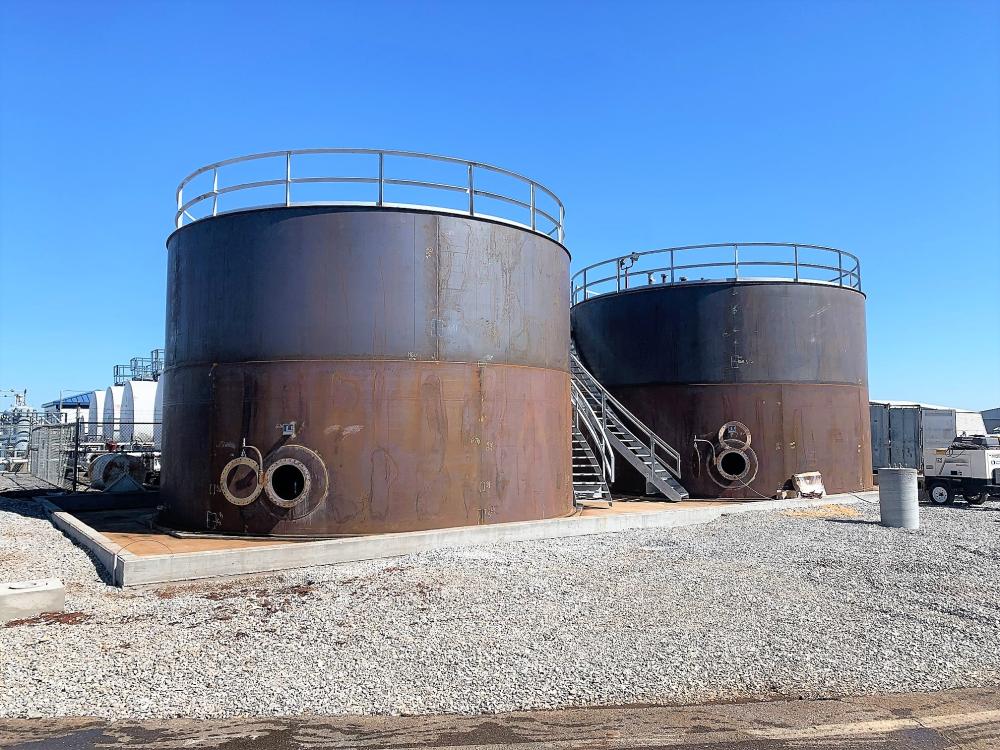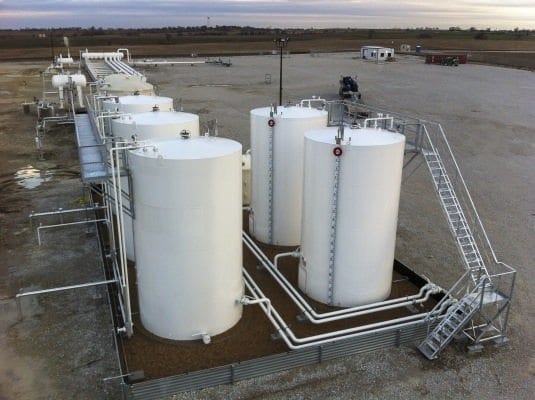The API 650 Welding Inspection Guide for Thorough Project Audits
Wiki Article
A Detailed Appearance at the Installation Refine of Welding Evaluation Techniques
Welding inspection is an essential process that ensures structural honesty and security. The setup of assessment methods includes several organized steps, each important to achieving trusted results. From preparation and tool option to carrying out non-destructive and aesthetic examinations, each phase demands cautious attention. Comprehending these treatments can significantly boost quality control in welding jobs. What difficulties occur in carrying out these strategies, and exactly how can they be efficiently attended to?Recognizing the Significance of Welding Evaluation
Welding evaluation is a critical component of guaranteeing architectural integrity and safety in building and production procedures. This method entails evaluating bonded joints for problems, making sure that they fulfill certain standards and guidelines. By methodically evaluating weld high quality, examiners can recognize problems such as splits, voids, and insufficient blend, which can endanger the toughness and durability of frameworks.The value of welding inspection expands beyond instant security concerns; it aids prevent costly failures and possible risks in the long-term. Effective evaluation techniques foster compliance with sector requirements, consequently improving the general dependability of welded components. On top of that, a durable assessment procedure adds to maintaining the reputation of makers and builders, as it guarantees clients of the quality of their projects. Inevitably, understanding the significance of welding inspection is important for promoting secure building practices and ensuring the long life of vital facilities and products.
Selecting the Right Devices for Assessment
When picking the ideal devices for evaluation, it is vital to ponder the certain requirements of the welding procedure and the materials included. Numerous evaluation approaches, such as visual, ultrasonic, and radiographic screening, necessitate distinctive devices tailored to their special needs. For aesthetic evaluations, devices like amplifying calipers and glasses are vital for reviewing weld quality. Ultrasonic screening needs customized tools efficient in transmitting and getting acoustic waves to discover interior imperfections. Radiographic testing, on the other hand, utilizes X-ray or gamma-ray resources along with delicate movie or electronic detectors to expose variances.
Additionally, personal protective equipment (PPE) is necessary to assure the safety of inspectors during assessments. Picking the right devices not just improves the precision of evaluations yet also contributes to the overall integrity and safety of the welding job. As a result, a complete understanding of readily available devices and their applications is important for efficient welding assessment.
Getting ready for the Assessment Process
Before initiating the inspection procedure, it is important to establish a comprehensive plan that lays out the extent and goals of the assessment. This plan must include certain standards that specify what makes up acceptable quality in the welding work being evaluated. Determining the relevant codes and criteria is important, as they will certainly lead the assessment requirements and approaches.Additionally, personnel associated with the examination needs to be sufficiently trained and licensed in welding assessment techniques to ensure reliability and accuracy. A list can be valuable in organizing the numerous elements of the evaluation, varying from equipment preparedness to ecological conditions that can affect the analysis.

Lastly, logistical factors to consider such as scheduling, available resources, and interaction in between team members ought to be dealt with. By preparing methodically, examiners can improve the efficiency of the analysis and make certain that all critical aspects are duly taken into consideration before waging the examination itself.
Carrying Out Visual Inspections

Performing visual evaluations is a crucial action in the welding evaluation procedure, calling for mindful preparation to ensure efficient assessment. Inspectors have to be familiar with key problem signs that can indicate prospective concerns in weld quality. By concentrating on these facets, one can enhance the general integrity of the assessment end results.
Getting Ready For Visual Evaluation
Visual inspection functions as an essential first action in the welding assessment procedure, ensuring that any type of potential issues are determined early (API 650 Welding Inspection). Correct prep work is important for effective aesthetic assessment. Examiners should start by examining appropriate documentation, including welding treatments and Website specifications, to understand the project requirements. They should gather needed tools, such as multiplying glasses, flashlights, and ideal personal safety tools (PPE) A detailed examination of the assessment location is essential; inspectors ought to verify it is totally free and clean of blockages. Additionally, it is crucial to develop ideal lighting conditions to improve visibility of welds. By taking these primary steps, assessors can develop an environment for identifying disparities and guaranteeing the integrity of the welded structuresSecret Flaw Indicators
A thorough understanding of key issue indicators is important during visual inspections to guarantee the top quality and safety and security of welded joints. Examiners must focus on specific signs such as fractures, porosity, undercuts, and insufficient blend. Cracks might look like sharp lines and can compromise structural honesty. Porosity manifests as little holes that can compromise weld stamina. Undercuts, which are grooves along the weld side, can bring about stress and anxiety focus. Incomplete blend shows that the weld metal did not properly bond with the base material, resulting in a weak joint. By systematically identifying these issues, examiners can determine compliance with market standards and enhance the general reliability of bonded structures, eventually contributing to safer functional conditions.Applying Non-Destructive Examining Methods

Numerous non-destructive screening (NDT) techniques are indispensable to assuring the honesty of bonded structures without endangering their functionality. These approaches enable inspectors to examine weld quality and discover flaws without causing damage to the products being evaluated. Common NDT strategies consist of ultrasonic testing, radiographic screening, magnetic fragment testing, and color penetrant screening. Each approach offers a certain purpose, attending to various types of defects such as cracks, porosity, or incomplete blend.
Carrying out NDT strategies requires an organized method, starting with selecting the suitable method based upon the products and the nature of the weld. Training workers in these strategies is essential for precise outcomes. Furthermore, developing clear treatments and standards guarantees consistency throughout the evaluation process. By incorporating NDT into the welding inspection workflow, organizations can boost the reliability of their products while reducing prospective dangers related to architectural failings. This aggressive approach ultimately adds to keeping safety and quality standards in welded constructions.
Analyzing and recording Assessment Outcomes
Efficient documents and analysis of inspection outcomes are essential components of the welding evaluation process. Precise records of inspection searchings for function as a reference for quality control and conformity with market standards. API 650 Welding Inspection. Assessors must utilize structured forms or electronic systems to log information such as the sort of weld, inspection techniques employed, and any kind of disparities determined during the analysisExtensive analysis is vital as soon as data is collected. This includes comparing results versus established standards to determine fads or persisting issues. Statistical devices may be used to quantify defects and assess their influence on overall weld high quality.
Efficient communication of searchings for to appropriate stakeholders is important. Reports and recaps need to go to the website be clear and succinct, highlighting essential insights and referrals for restorative actions. By systematically analyzing and documenting examination results, organizations can cultivate continual improvement in welding practices and boost item integrity.
Often Asked Inquiries
What Credentials Are Required to Become a Welding Examiner?
To end up being a welding assessor, one typically needs pertinent certifications such as AWS CWI, along with experience in welding methods, expertise of welding codes, and effectiveness in inspection strategies to assure quality and safety standards.Exactly How Commonly Should Welding Inspections Be Carried Out?
Welding examinations should be conducted frequently, normally after each weld is finished, and occasionally during projects. Factors such as project complexity, sector requirements, and governing needs can affect the frequency of these evaluations.What Is the Expense of Welding Assessment Providers?
The price of welding assessment solutions click to read more varies considerably based on elements such as project size, location, and complexity. Normally, prices vary from $100 to $150 per hour, with additional charges for specialized screening and certifications.Exist Certifications for Welding Inspectors?
Yes, there are different certifications for welding assessors, consisting of those offered by the American Welding Culture (AWS) and the International Institute of Welding (IIW) These certifications assure examiners possess the necessary abilities and expertise for efficient evaluations.
Exactly how Do I Pick an Inspection Company?
To choose an assessment company, one ought to evaluate certifications, experience, sector online reputation, and client testimonials. Additionally, comparing solution offerings and pricing can help ensure the chosen provider satisfies certain task requires efficiently.Furthermore, employees included in the examination must be appropriately trained and accredited in welding inspection techniques to ensure dependability and precision. Performing visual assessments is an essential step in the welding evaluation process, needing cautious prep work to assure reliable analysis. Aesthetic examination offers as an important very first step in the welding assessment procedure, guaranteeing that any potential defects are identified early. Effective documents and analysis of inspection results are important elements of the welding assessment process. Welding assessments ought to be conducted on a regular basis, normally after each weld is finished, and regularly during projects.
Report this wiki page